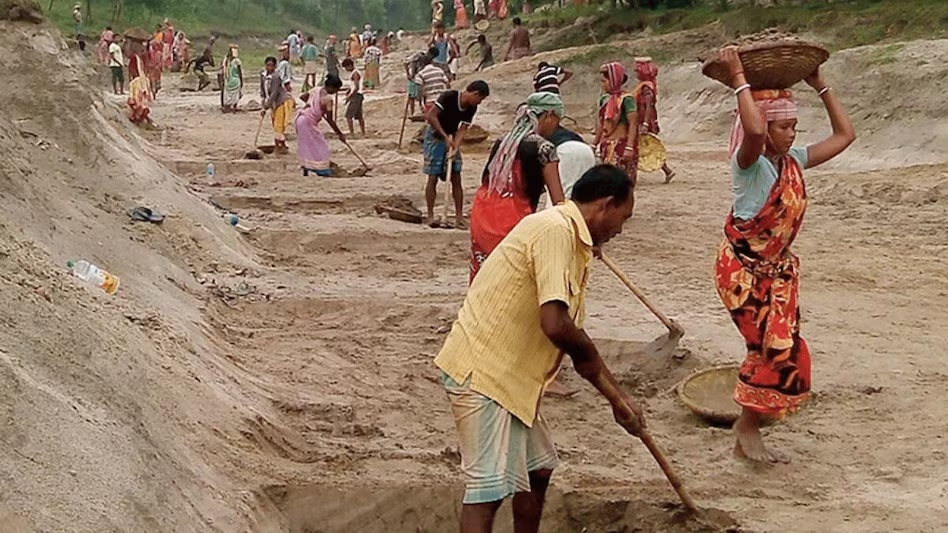Description
_BILL_2023.png)
Copyright infringement not intended
Picture Courtesy: Economic Times
Context: The Union Ministry of Information and Broadcasting has invited comments on the proposed Broadcasting Services (Regulation) Bill, 2023, aiming to overhaul regulations in response to the changing broadcasting landscape and technological advancements.
Details
- The Cable Television Networks (Regulation) Act of 1995 has been in effect for three decades, overseeing content on linear broadcasting, including cable networks. However, the broadcasting landscape has changed significantly with the advent of new platforms like DTH, IPTV, and OTT.
Need for Regulation
- With the digitization of the broadcasting sector, there is a growing need to update and streamline the regulatory framework. The aim is to ensure ease of doing business and enhance adherence to the Programme Code and Advertisement Code by broadcasters and Distribution Platform Operators.
- The Ministry of Information and Broadcasting has proposed the Broadcasting Services (Regulation) Bill, 2023, to replace the existing Cable Television Networks (Regulation) Act, 1995, and other Policy Guidelines governing the broadcasting sector.
- The Draft Broadcasting Services (Regulation) Bill 2023 comprises six chapters, 48 sections, and three schedules.

Key highlight of the proposed Broadcasting Services (Regulation) Bill 2023
Consolidation and Modernization
- The bill consolidates and updates regulatory provisions for various broadcasting services under a single legislative framework.
- Recognizing technological advancements, the regulatory purview is extended to cover Over-the-Top (OTT) content and digital news, areas currently regulated through the Information Technology Act 2000.
Contemporary Definitions and Future-Ready Provisions
- Introduces comprehensive definitions for contemporary broadcasting terms, ensuring clarity and relevance.
- Incorporates provisions that anticipate and accommodate emerging broadcasting technologies to future-proof the legislation.
Strengthening the Self-Regulation Regime
- Introduces 'Content Evaluation Committees' to contribute to the self-regulation process.
- Expand the existing Inter-Departmental Committee into a more participative and broader 'Broadcast Advisory Council' to provide a collaborative and informed approach to regulation.
Differentiated Programme Code and Advertisement Code
- Permits a differentiated approach to Programme and Advertisement Codes across various services.
- Requires broadcasters to self-classify content and implement robust access control measures for restricted content.
Accessibility for Persons with Disabilities
- Address the specific needs of persons with disabilities in the broadcasting sector.
- Includes provisions that enable the issuance of comprehensive accessibility guidelines, ensuring inclusivity and accessibility for all.
Statutory Penalties and Fines
- Introduces non-monetary penalties such as advisory, warning, and censure for operators and broadcasters.
- Includes monetary penalties linked to the financial capacity of the entity. Imprisonment and/or fines are reserved for very serious offences.
Equitable Penalties
- Ensure fairness and equity in the imposition of penalties.
- Links monetary penalties and fines to the financial capacity of the entity, taking into account their investment and turnover.
Infrastructure Sharing, Platform Services, and Right of Way
- Address operational aspects and ensure efficient dispute resolution.
- Includes provisions for infrastructure sharing among broadcasting network operators.
- Addresses the carriage of platform services.
- Streamlines the Right of Way section to handle relocation and alterations more efficiently. Establishes a structured dispute resolution mechanism.
.jpg)
Conclusion
- The Ministry of Information and Broadcasting aims to usher in a new era of transparency, self-regulation, and future-ready broadcasting services in India through the comprehensive measures outlined in the proposed Broadcasting Services (Regulation) Bill, 2023.
|
PRACTICE QUESTION
Q. How has the evolution of telecommunications in India, particularly with the advent of 5G technology, impacted both urban and rural connectivity, and what challenges and opportunities does this present for the country's economic and social development?
|




_BILL_2023.png)
_BILL_2023.png)




